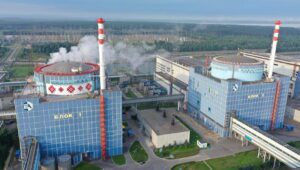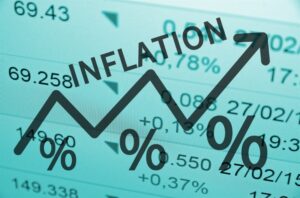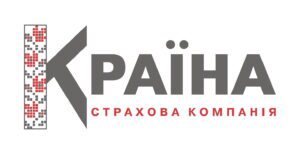
Westinghouse Electric Company and NAEK “Energoatom” signed a contract for the development of an updated feasibility study for the construction of two AP1000 units at the Khmelnytsky NPP in Ukraine.
“In accordance with the agreement, Westinghouse will provide technical information on the AP1000 installation in support of Energoatom’s updated feasibility study for the construction of two AP1000 reactors at the Khmelnytskyi NPP,” the American company said in a press release.
These efforts advance the previously signed agreement between the companies on the construction of AP1000 units at units #5 and #6 of the Khmelnytsky NPP, the beginning of the licensing process, and the further development of Ukraine’s initiatives in the field of clean energy.
“This is an important step for Ukraine’s energy independence. We are ready to provide our technologies and equipment for the AP1000 plant in Ukraine, and we are constantly inspired by the unwavering determination and resilience of our strategic partners,” noted David Durham, president of Westinghouse Energy Systems.
As reported, in September 2021, Energoatom and Westinghouse signed a memorandum on the construction of five NPP power units in Ukraine. In early June 2022, the companies signed agreements to increase the number of nuclear power units that will be built using AP 1000 technology in Ukraine from five to nine units, and to create a Westinghouse engineering and technical center in the country.
“Energoatom” is the operator of all four operating nuclear power plants of Ukraine. It operates the Zaporizhia, South-Ukrainian, Rivne and Khmelnytskyi stations with 15 power units equipped with water-hydrogen power reactors with a total installed electrical capacity of 13.8 GW.

The application for the transit of Russian gas through the territory of Ukraine remains at the level of the previous days and months.
Europe has been without Nord Stream gas for the second day.
The energy deficit was aggravated by a two-fold drop in electricity production due to wind.
TRANSIT THROUGH UKRAINE
“Operator GTS Ukrainy” accepted from “Gazprom” an application for gas transit for Tuesday in the amount of 41.2 million cubic meters. m, evidenced by OGTSU data. The indicator on Monday was 41.1 million cubic meters. m. Powers are declared only at one of the two points of entry into the Ukrainian GTS – the Suzha gas measuring station. The application was not accepted for the corridor through the Sokhranovka GIS.
OGTSU announced a force majeure for the acceptance of gas for transit through the GIS station “Sochranovka”, referring to the fact that it cannot carry out operational and technological control over the compressor station “Novopskov”.
Kyiv offered to transfer transit volumes from “Sochranovka” to GIS “Suja”, but “Gazprom” stated that this was technologically impossible.
At the same time, Ukraine insists that payment should still be made on the basis of the estimated volume of transportation of the long-term contract of 109 million cubic meters. m per day according to the “download or pay” rule. “Naftogaz” claims that it is now not receiving payment for transit and is preparing to apply to arbitration.
EUROPEAN MARKET
At the beginning of the new week, the production of electricity due to wind in Europe fell to 7.6% of the energy balance in the EU, while the average indicator for the past week was 15%, according to data from the WindEurope association.
Europe continues to pump gas into underground storage facilities. At the moment, the reserves are about 62.08%, according to data from the Gas Infrastructure Europe association. The increase over the last day was 0.46 percentage points. The current level of reserves in the UGC of Europe lags behind the five-year average by 1.24 percentage points. Since this year, the EU has introduced strict regulation of the use of underground storage facilities. By the beginning of the selection season in 2022, the reserves should be at least 80% of the capacity of the UHP, and 90% thereafter.
European terminals for receiving LNG in July are operating at an average capacity of 63% of their capacity, which is equal to the June indicator. For now, the region remains a premium market for LNG, as prices in Asia are slightly lower than European hubs.
Spot prices for gas in Europe against the background of the Nord Stream repair shutdown are at the level of $1,690 per thousand cubic meters. In Asia, prices are noticeably lower – the August futures on the JKM Platts index (Japan Korea Marker – reflects the spot market value of cargo delivered to Japan, South Korea, China and Taiwan) is trading at $1,390.

The Government Emergency Response Team of Ukraine CERT-UA, operating under Gosspetssvyaz, reported the distribution of dangerous e-mails with the subject “Unified Official Report on the Humanitarian Situation. Ukraine”.
“The letters come from compromised e-mail addresses of state structures of Ukraine and contain attachments entitled “Humanitarian catastrophe of Ukraine since February 24, 2022″ in the form of an XLS document,” the press service of Gosspetssvyaz reported on Monday.
“The document contains a macro, the activation of which will lead to the launch of the file “baseupd.exe”, its execution will lead to the defeat of the computer by the malicious program Cobalt Strike Beacon”, – warned experts.
Activity is tracked by identifier UAC-0056. Gosspetssvyaz noted that these attackers had already carried out a cyberattack last week.

The Ministry of Energy of Ukraine and the Ministry of Foreign Affairs of Ukraine express their deep disappointment in connection with the decision of the Canadian government to issue a permit for the return to Germany of the turbines of the Nord Stream 1 gas pipeline repaired by Siemens Canada. “The international community, including Canada and Germany, has already imposed a number of significant sanctions against Russia in order to stop its war against Ukraine. Ukraine is grateful for these decisive actions. At the same time, the latest Canadian-German agreement and the decision announced on its basis is adjusting the sanctions regime to the whims of Russia,” reads a joint statement released by the press services of the Ministry of Energy and the Ministry of Foreign Affairs of Ukraine.
The departments called this precedent dangerous and contrary to the rule of law, which would allow Moscow to strengthen its own sense of impunity.
The statement also substantiates that the Russian Federation can continue to supply gas to Germany in full without the aforementioned turbine, and the Russian demand for its mandatory return “is blackmail that has no technical justification.
The departments reported that Ukraine provided comprehensive explanations to the German and Canadian sides, who confirmed that they regard Russia’s demand as having no technical justification, but still decided to make a concession.
“The transfer of the Nord Stream 1 turbine will allow Russia to continue to use energy as a tool of hybrid warfare against Europe. We call on the Canadian government to reverse this decision, as well as ensure the integrity of the sanctions regime. There can be no exception when it comes to holding Russia accountable for tens of thousands of killed Ukrainians, hundreds of thousands of destroyed infrastructure, millions of internally displaced persons and refugees, and an undisguised attack on democracy and the rule of law around the world,” the Ministry of Energy and the Foreign Ministry concluded.

The growth of consumer prices in Ukraine in June 2022 accelerated to 3.1% from 2.7% in May, returning to the level of April, the State Statistics Service (Gosstat) reported on Friday.
In June last year, inflation was 0.2%, so in annual terms, in June this year, it rose to 21.5% from 18% in May, 16.4% in April, 13.7% in March, 10.7% – in February and 10% – in January, the agency said.
Core inflation over the past month also increased to 1.6% from 1.4% in May, which, however, is less than 3% in April and 3.8% in March. However, taking into account 0.4% in May 2021 in annual terms, it increased to 14.9% from 13.7% in May, 13% in April, 10.5% in March, 8.2% – at the end of February and 7.6% – at the end of January.
Since the beginning of this year, for its first half of the year, inflation in Ukraine amounted to 17.4%, and the base – 11.4%, said the State Statistics Service.
In the consumer market in June, prices for food and non-alcoholic beverages increased by 3.2%. Eggs increased the most (by 17.2%). Prices for sugar, rice, cereal products, pork, vegetables, poultry meat increased by 10.9-4.2%. At the same time, prices for beef and fruits fell by 1.1%.
Prices for alcoholic beverages and tobacco products increased by 2.4%, including for alcoholic beverages – by 3.4%, tobacco products – by 1.4%.
Clothes and footwear fell in price by 1.4%, in particular, clothes – by 1.8%, shoes – by 0.9%.
Transportation prices rose by 11.2%, mainly due to a rise in the price of fuel and lubricating oils by 21.3%, as well as road and rail passenger transport by 7.4% and 4.5%, respectively.
In the field of communications, prices increased by 0.9%, which is associated with a rise in the cost of postal services and telephone equipment by 3.0%.
As reported, in 2021 inflation in Ukraine rose to 10% from 5% in 2020 and 4.1% in 2019, while core inflation rose to 7.9% against 4.5% a year earlier.

The Expert Rating rating agency has suspended the financial stability rating of the insurance company Krayina (Kyiv) at the company’s request, the RA website reports. As reported, Expert Rating updated the company’s rating at the level of “uaAA +” on the national scale in the first quarter of 2022.
During this period, the gross insurance premiums of IC “Kraina” in January-March 2022 amounted to UAH 125.2 million, which is 17.7% less compared to the same period in 2021.
In the first quarter of 2022, IC “Kraina” made UAH 60.28 million of insurance payments and indemnities, which is 31.32% less than in the same period of 2021. At the same time, the level of payments in the first quarter of 2022 compared to the first quarter of 2021 decreased by 9.55 p.p. up to 48.16%.
The equity capital of the company as of March 31, 2022 increased by 3.65% to UAH 155.57 million, while its gross liabilities increased by 5.63% to UAH 181.45 million. As a result, the level of coverage of the insurer’s liabilities by equity capital decreased by 1.64 percentage points. – up to 85.74%.
In the period under review, the volume of cash and cash equivalents of the company decreased by 38.61% and amounted to UAH 62.12 million, while the indicator of coverage of the insurer’s obligations with cash decreased by 22.99 percentage points. and amounted to 34.24%.
IC “Kraina” has been operating in the insurance market of Ukraine since 1994. It has licenses for 23 types of insurance.